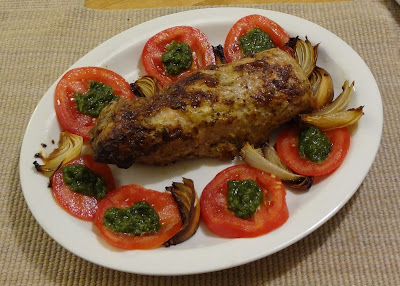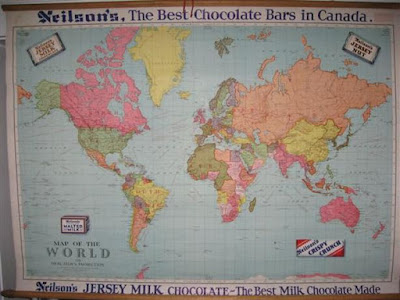This is the Rosetta Stone, as if you didn't know. (Don't forget to click on the photos.)
I wasn't alone when I saw it. . .
. . .although I usually manage to elbow my way to the front. People notice that I can't see over a lot of heads so they usually let me through.
I saw the Mona Lisa with a crowd also. Can you see her? You may need your magnifying glass. She's at the far end of this long room.
I did what I do though and soon enough, it was just the two of us. She's behind an unbreakable glass barrier; it reduces the intimacy a bit.
I wrote recently about the vast numbers of people travelling, all lining up to see the same age-old attractions. I was told about a traveller who got home recently and wrote to his brother, "Europe is more crowded than I remember." It's funny (Homer would say it's funny because it's true) because it sounds a little like you'd say, "The line-ups at the bank are longer than they used to be." I know what he means though.
I'm not sure why it's so awe-inspiring to see the originals of antiquities and paintings and sculptures. It is though. I looked up the Rosetta Stone after I got home and I learned much more about it than I was able to take in with the hundreds of other visitors at the British Museum.
Egypt, Ptolemaic Period, 196 BC
A valuable key to the decipherment of hieroglyphs, the inscription on the Rosetta Stone is a decree passed by a council of priests. It is one of a series that affirm the royal cult of the 13-year-old Ptolemy V on the first anniversary of his coronation.
In previous years the family of the Ptolemies had lost control of certain parts of the country. It had taken their armies some time to put down opposition in the Delta, and parts of southern Upper Egypt, particularly Thebes, were not yet back under the government's control.
Before the Ptolemaic era (that is before about 332 BC), decrees in hieroglyphs such as this were usually set up by the king. It shows how much things had changed from Pharaonic times that the priests, the only people who had kept the knowledge of writing hieroglyphs, were now issuing such decrees. The list of good deeds done by the king for the temples hints at the way in which the support of the priests was ensured.
The decree is inscribed on the stone three times, in hieroglyphic (suitable for a priestly decree), demotic (the native script used for daily purposes), and Greek (the language of the administration). The importance of this to Egyptology is immense.
Just think. It was amazing to consider that I'd seen it.
And it's the same with the Mona Lisa. At a certain point, all those other people didn't matter at all. She was breath-taking and I was glad to see her, even through the barrier.
There weren't so many people around when we reached the Venus de Milo.
It was quiet enough that I was able to sing for Dan and William a few bars of a song from the 1950s:
Venus de Milo
Was famous for her charms
But strictly between us
You're cuter than Venus
And what's more you've got arms. . .
I would direct you to a place where you might listen to this song but it must not have been as popular as I remember because it doesn't seem to be preserved here on the Internet. Moreover, it was sung by Bob Manning and I don't remember him at all.
Venus was exquisite though and I was happy to spend time with her.








































 Fred Cogswell
Fred Cogswell












